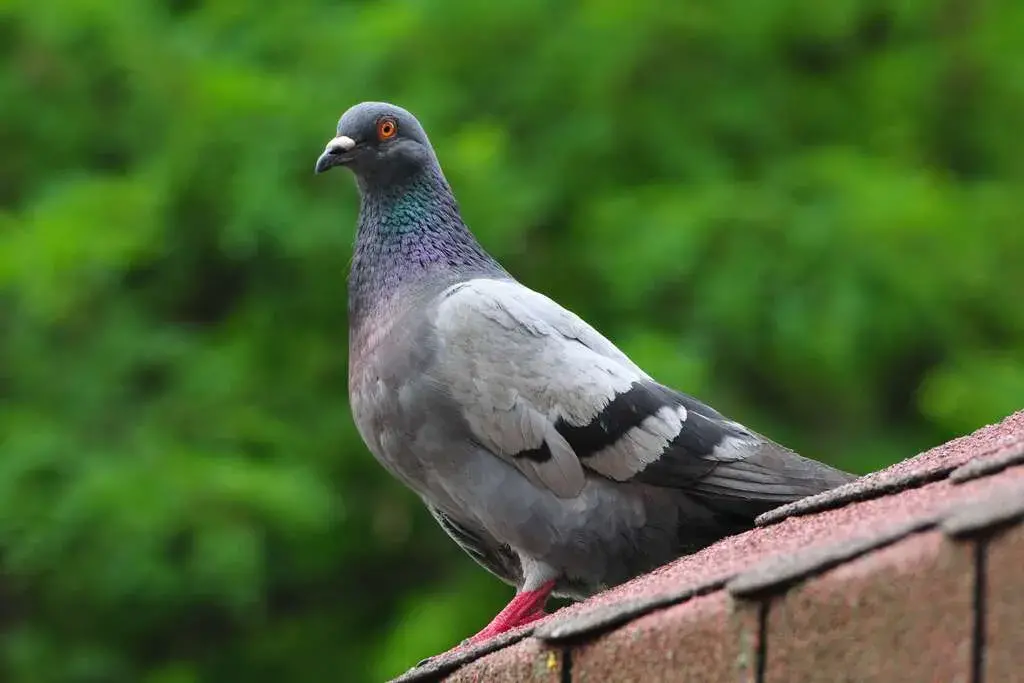
Controlling pigeon populations in big cities is both a necessity and a challenge. An overabundance of pigeons often leads to substantial urban problems, including health concerns, structural damage, and negative impacts on the urban ecosystem.
It is crucial to manage these populations to maintain the balance between human interests and the well-being of avian wildlife. A successful pigeon control strategy must be humane, respecting the lives of the birds while being effective in reducing their numbers to manageable levels.
Various non-lethal methods have been developed, focusing on deterrence, habitat alteration, and population control. Spikes, nets, and angled sheathing prevent pigeons from landing and nesting in certain areas, while birth control measures for pigeons offer a proactive approach to reducing population growth rates over time.
These approaches aim to discourage pigeons gently without causing harm, easing the strain on the urban ecosystem.
Non-Lethal Control Methods

Non-lethal control methods prioritize humane and sustainable approaches to managing pigeon populations in urban settings, focusing on strategies that modify behaviors without causing harm to the birds.
Population Management Strategies
Birth control for pigeons is an efficient approach for reducing pigeon populations over time. This method involves adding a contraceptive to the birds’ food, which prevents eggs from fertilizing.
It’s a targeted strategy that ensures a gradual decline in numbers, contributing to a more pigeon-free environment without impacting other wildlife.
Environmental Modification Techniques
Altering the environment can make it less appealing to pigeons, thereby controlling their numbers. Installing bird netting creates physical barriers that prevent birds from reaching nesting sites.
Spikes, bird wires, and polybutylene gel are also effective at deterring pigeons from roosting on ledges, as they make surfaces uncomfortable or inaccessible.
Deterrence and Dispersal Methods
Deterrents such as bird slides make roosting surfaces angled and slippery, causing pigeons to move elsewhere. Chemical deterrents create unpleasant sensations for the birds without causing harm.
Additionally, methods like falconry and playing predator sounds take advantage of pigeons’ natural fear of predators, encouraging them to disperse. Proper management of unintentional food sources is crucial, as removing access to food can significantly reduce pigeon presence in the area.
Impact on Urban Environments

Controlling pigeon populations in big cities is crucial to mitigate economic repercussions and public health issues. Pigeons, particularly in their feral state, can cause extensive damage to structures and pose various health concerns.
Economic and Structural Consequences
The nesting habits of feral pigeons lead to significant property damage. Their acidic droppings deteriorate building materials, leading to costly repairs. Moreover, the presence of pigeons often necessitates increased spending on pest control measures. The economic loss due to pigeons is twofold.
The direct cost of remediation and repair and the potential decrease in property values. Flocking behavior in urban areas can exacerbate these issues as larger birds congregate in specific locations, amplifying the damages and escalating economic losses.
Population control methods, such as culling or shooting, can be controversial and potentially inhumane, so cities may consider investing in the best pigeon control strategy.
Public Health and Safety Concerns
Public health risks arise from pigeon infestations. Pigeons can transmit diseases to humans, and their accumulated droppings can lead to slip-and-fall accidents. Allowing pigeons to feed freely can attract more birds, increasing the risk of disease transmission and safety hazards.
Furthermore, lethal methods like shooting or the use of raptors can create additional public safety concerns. Implementing humane and effective strategies, such as birth control measures for pigeons, can address the ecological impact and public health concerns associated with pigeon populations in urban environments.
End Note
Effective pigeon control in urban areas involves habitat modification, deterrents, and ethical population management. Adherence to humane methods is paramount, with strategies focusing on limiting food sources and nesting opportunities, as well as the responsible use of preventative measures. Continued education and innovative approaches will be essential in maintaining balanced, coexistent environments for city dwellers and pigeon populations.
Explore Further:











